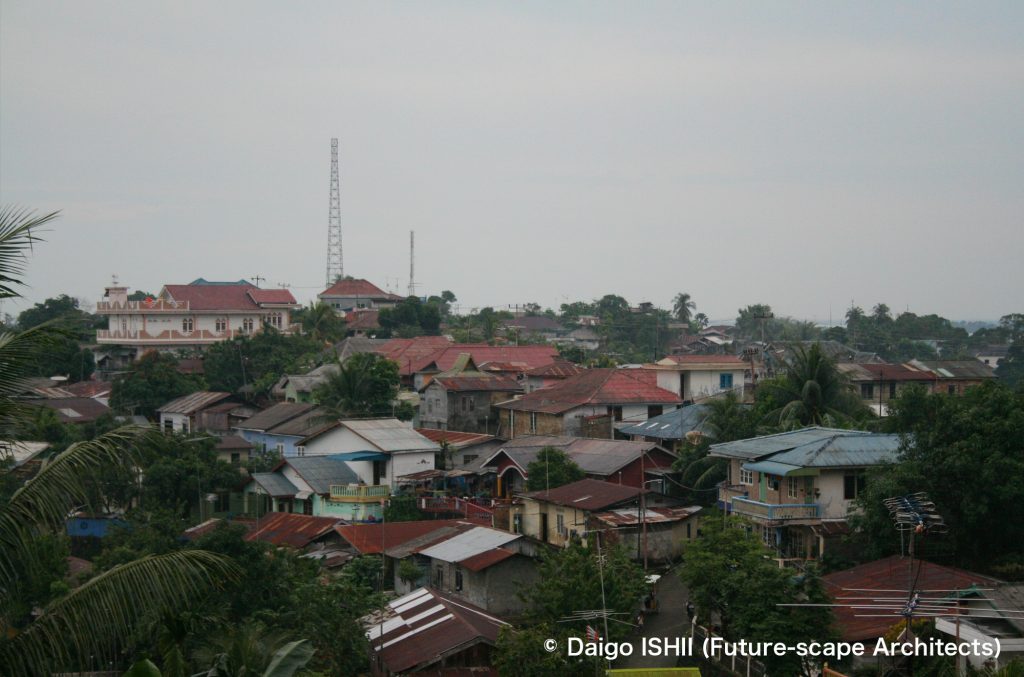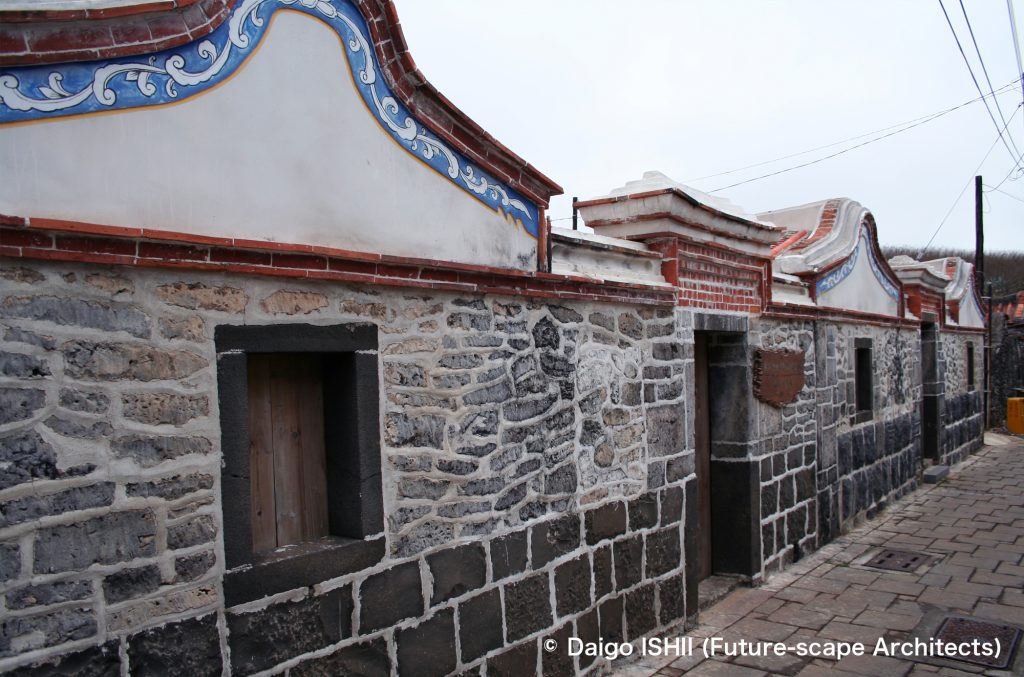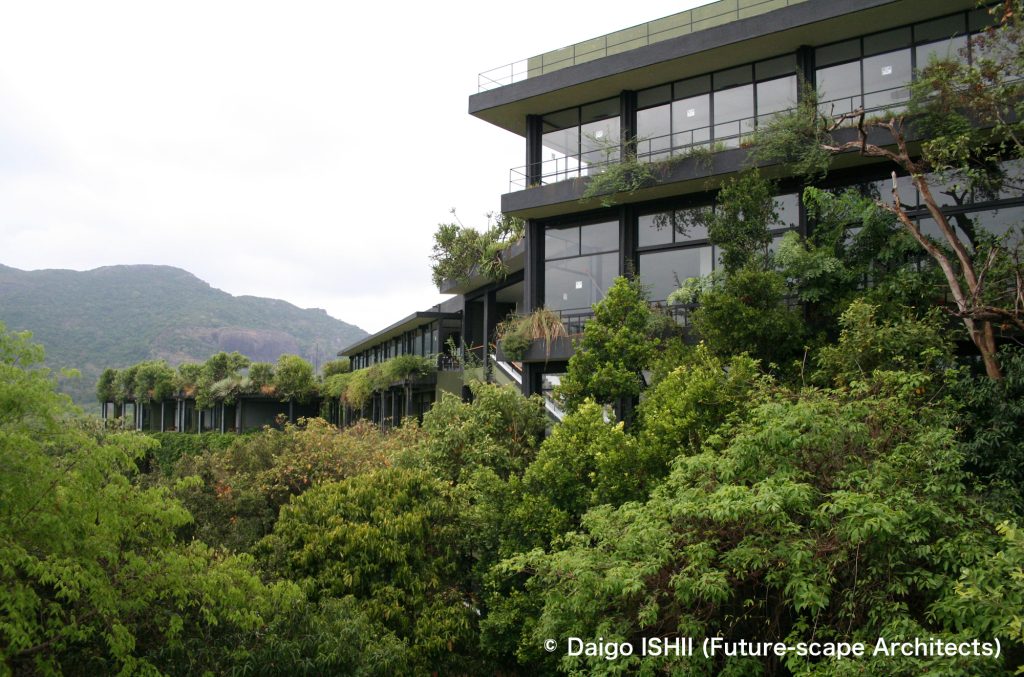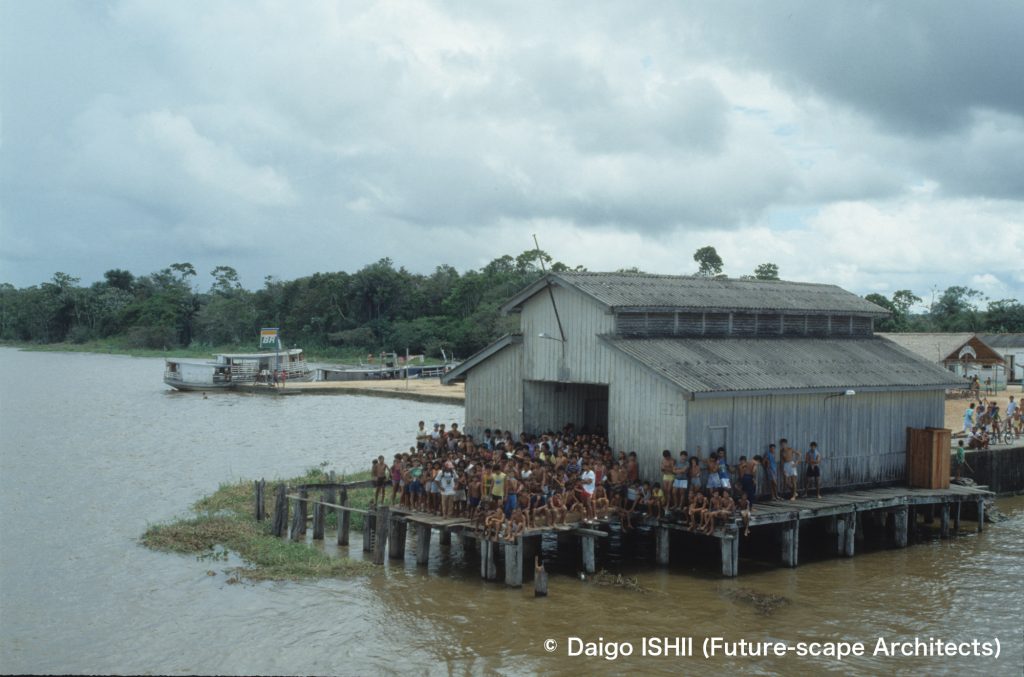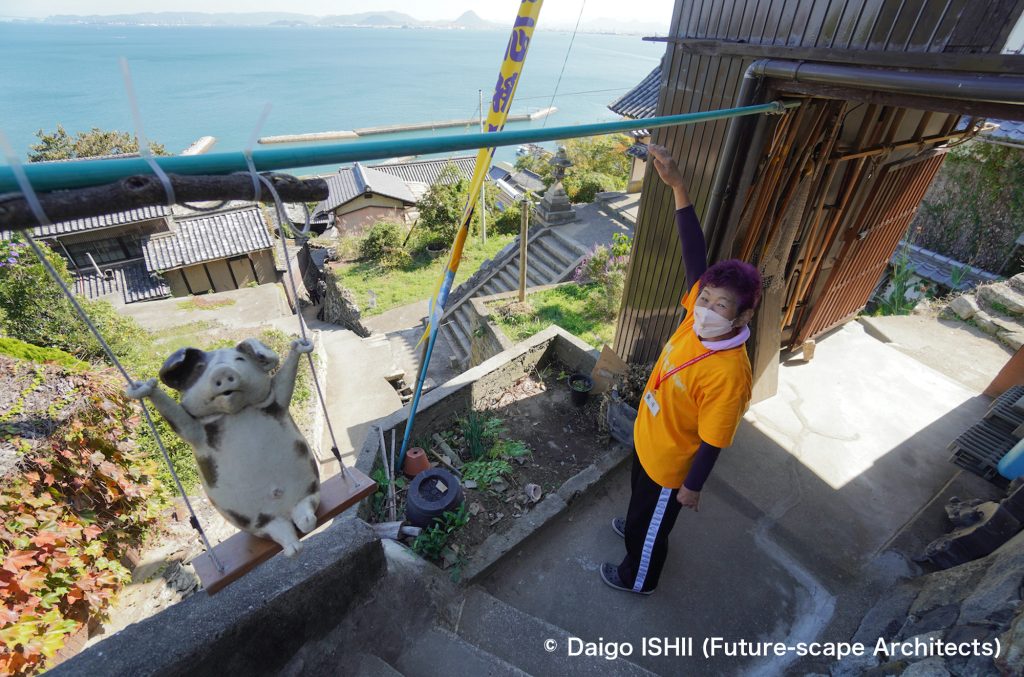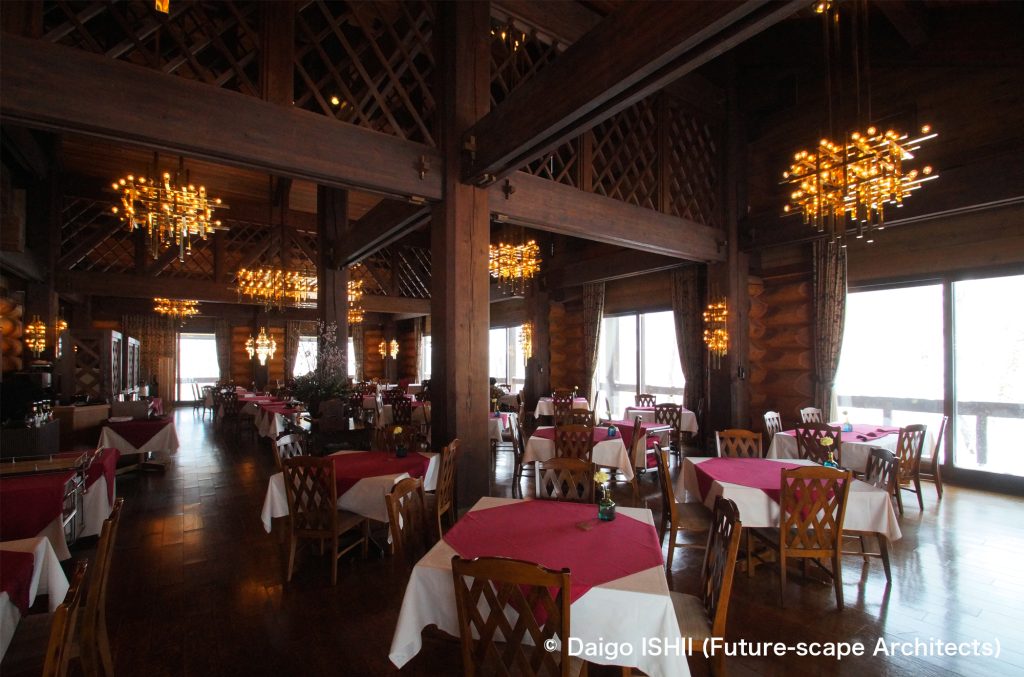先ず初めに、五所川原市民の皆様、申し訳ありませんでした。青森が人口30万人、弘前が18万人、五所川原が6万人。人口も経済規模でも劣る五所川原が、祭りのスケールで見劣りすると考えるのも、当然のこと。
ところが、どうしてどうして、実際に見て、その思い込みを反省すること頻り。素晴らしさと言ったら、青森にも弘前にも、引けを取りません。
First of all, I have to apologize to Goshogawara citizen. Compared with Aomori city with population of 300,000 people, Hirosaki city with 180,000, Gosyogawra city has only population of 60,000 people. It was a matter of course that I had imaged the festival in Goshogawara, which population and economic scale was less than other two cities, must be inferior in scale.
Far from it ! I reflected on that assumption when I saw the festival actually. Its wonderfulness was not in the least inferior to Aomori and Hiroshi.
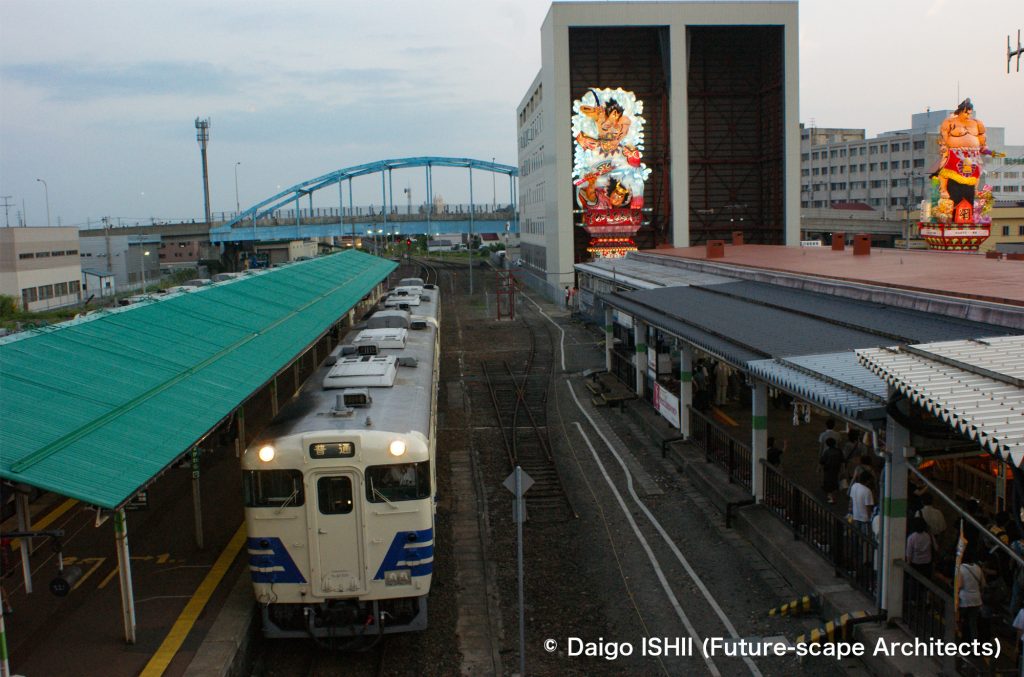
See the Tachi-Nebuta floats from the overpass.
列車が五所川原駅に着き、階段で跨線橋に上がった瞬間、乗客は、一斉に窓の外に引き寄せられます。町並のスカイラインから、立佞武多が顔を出してます。ここで、先ず、わしづかみ。2台の立佞武多の格納庫が、駅前にあり、出陣前の立佞武多を間近に見るチャンスです。首を90度折り曲げても、全容はよく分かりませんが、とにかくでかい。
空もまだ幾分明るい午後7時、号砲とともに、立佞武多が動き出しました。街中で、マジンガーZや鉄人28号に出くわすことは、まずないはずですが、彼らが町に出動するとは、こういう感じだったのですね。Wikipediaによれば、鉄人28号は、高さ20メートルで重さ23トン。かたや、立佞武多は、高さ23メートルで重さ20トンだから、遜色ありません。というか、鉄の鎧をまとった鉄人28号と、軽鉄と木の骨に和紙を貼っただけの立佞武多の重さが、ほとんど変わらないというのは、どういうこと?。第二次大戦中、骨組を竹で作った戦闘機が開発されたましたが、戦争の記憶の残る1960年代に開発された鉄人28号とは、その技術を応用した竹製の骨組だったのか?。
五所川原の立佞武多には、小さなねぶたは付かず、太鼓の山車の後ろに、笛と鐘の囃し方が続き、その次に踊り手、そして,立佞武多。圧倒的な立佞武多が際立つためには、これで充分。1993年に立佞武多の古図が発見されて、祭りが復活したのが1998年で、青森や弘前に比べて歴史が浅く、自由度が高いのか、踊りも多彩です。青森ねぶたのように片足で跳ねる組もあれば、伝統的な流しの舞踊もあります。
もう一つ、青森や弘前と違うのが、立佞武多の巡行ルートの電線地中化。だから、これだけのタッパがあっても、引っ掛かりません。立佞武多が、五所川原の都市景観を誘導していました。ただし、大正時代まで残っていた立佞武多が廃れたのも、電気の普及により、電線が張り巡らされたためだから、その盛衰に、景観との長い因縁がある祭です。その意味では、新しい変化に追い付いてなかったのが、中心商店街のアーケード。どこの町にもある、ふつうの高さのアーケードで、青森や弘前のねぶたなら見物に支障はないですが、五所川原だけは、アーケードの屋根に切られて、立佞武多の頭が見えません。とは言え、見物客が、車道に頭を出して、見上げているのは、これはこれで、おもしろい光景でした。
午後9時、号砲で祭りも終わりのはずでしたが、踊り手の一部が、狂乱したように踊り始めました。祭りの最中から、ヤンパパ、ヤンママの活躍が目立っていましたが、祭りの最後で、彼らのエネルギーが爆発。年に一度の祭りの高揚感をクールダウンするために、しばらくエネルギーを放出するのも、いいんではないでしょうか。と思ったら、軽いど突き合いが始まりました。これは、エネルギー放出し過ぎ。
At the moment when the train arrived at the Goshogawara station, and passengers finished going up the stairs to the overpass, they turned their eyes on the outside of the window all at once. On the skyline of the town, Tachi-Nebuta floats were protruding its face. Here, first, everyone was heart-gripped. The warehouses for two Tachi-Nebuta floats were in front of the station, so it was a chance to see the last adjusted float close by. Even if I bent the neck 90 degrees, I couldn't understand the whole figure. Anyway it was huge.
At 7:00 p. m. when the sky was still somewhat bright, Tachi-Nebuta floats started moving. It is rare to encounter with a gigantic robot of Japanese comic like Mazinger Z (Tranzor Z) or Tetsujin 28-go (Iron Man No. 28) in the city. However, if they had appeared in the town, they must have looked like this.
According to Wikipedia, the gigantic robot of Tetsujin 28-go is 20 meters high and weighs 23 tons. Meanwhile, a Tachi-Nebuta float is 23 meters high and weighs 20 tons, so they are similar. However, what does it mean ? Because the weight of a Tachi-Nebuta float, which frame was produced with light iron and wooden and was covered with a Japanese paper, is almost the same as the gigantic robot of Tetsujin 28-go covered with iron armor. During World War II, Japan develped a fighter aircraft made from bamboo. The gigantic robot Tetsujin 28-go, which was developed in the 1960s with memories of the war, might be produced with a bamboo frame that applied that technology.
Compared to the Aomori Nebuta and the Hirosaki Neputa, the Tachi-Nebuta in Goshogawara was simpler. It had no small floats. A Musical accompaniment followed a drum float, dancers came at the next, and behind them was a Tachi-Nebuta float. That parade composition was enough to highlight the overwhelming Tachi-Nebuta float. It was in 1998 that the festival restarted after the old drawing of a Tachi-Nebuta float had been discovered in 1993. Because of its short history compared to Aomori and Hirosaki, the flexibility and variety of dance were the character of the Tachi-Nebuta. Some teams jumped with one foot like the Aomori Nebuta, and others danced with traditional folk song style.
Another thing different from Aomori and Hirosaki was to put the electric wire in the parade route underground. So, Nebula floats didn't get caught on the wire though floats were high. The Tachi-Nebuta float induced the townscape of Goshogawara. However, the reason why the Tachi-Nebuta festival, whcih had remained until the 1920’s, had been abandoned was because electric wire was stretched due to the spread of electricity. The rise and fall on the festival was related to the townscape. In that sense, the arcade in the central shopping area didn't overtake the new change. The arcade was usual, and the height was similar to an arcade in any towns. In Aomori and Hirosaki, such arcade didn’t hinder the viewing of Nebuta. Meanwhile, in Goshogawara, spectators couldn’t see the head of Tachi-Nebuta float since the arcade roof cut it. However, the scenery that spectators looked up a float putting their face on a roadway from a sidewalk was interesting.
At 9:00 p.m., the festival ended with a signal gun, but some of dancers began to dance madly over again. In the festival, Yan-papa and Yan-mama (Yankee-papa and mama : young parents with motorcycle gang style) were outstandingly active, but, at the end of the festival, their energy seemed to have exploded. It is okay to release energy for a while in order to cool down the exhilaration of the festival once a year. When I thought such thing, the jabbing started. They realeased energy too much.
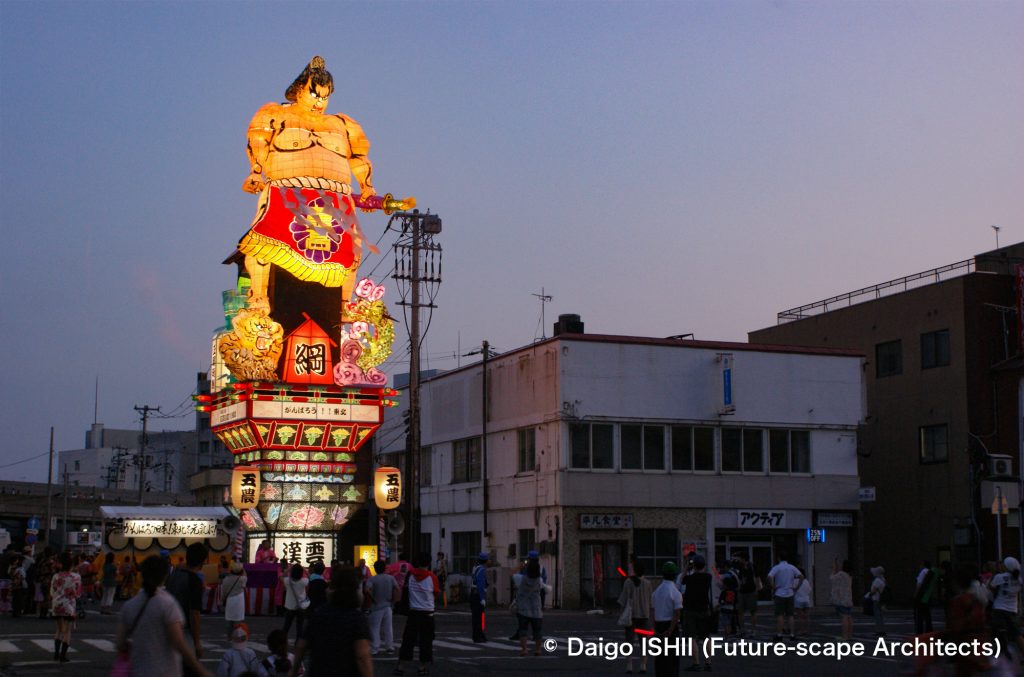
See the Tachi-Nebuta float by Goshogawara Agriculture and Forestry High School, which were starting from the warehouse in front of Goshogawara Station.
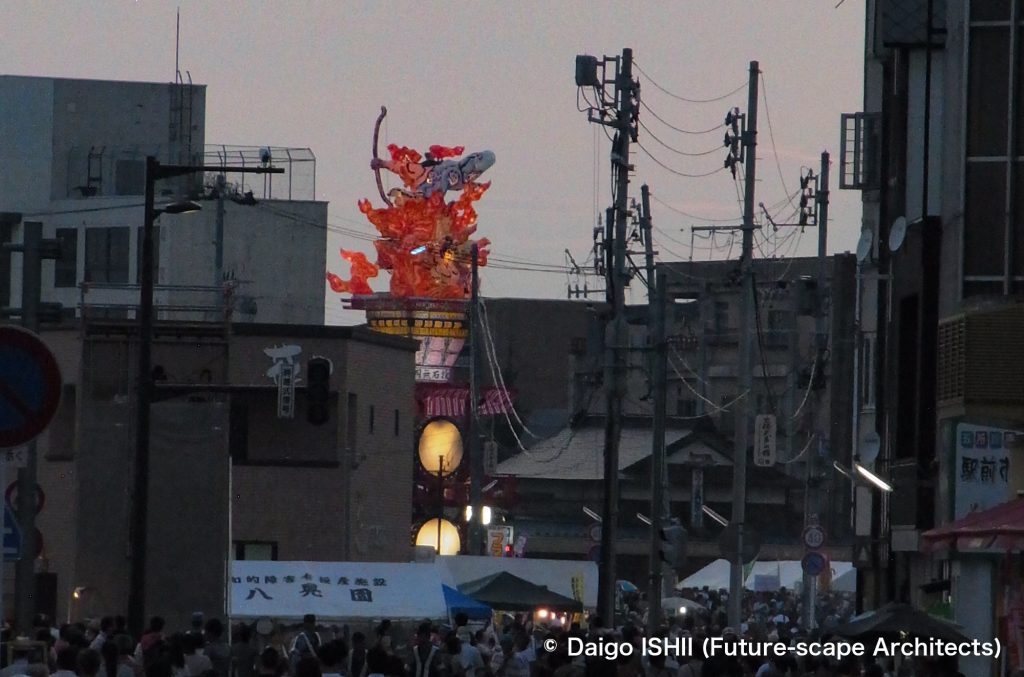
A Tchi-Nebuta float paraded, protruding from the streetscape of Downtown Gosyogawara.

The Tachi-Nebuta float "Water Margin - Li Kui and Zhang Shun" by Sakae Tachi-Nebuta Association paraded in Downtown Goshogawara.

The menfolk pulled the Tachi-Nebuta float "Water Margin - Li Kui and Zhang Shun" by Sakae Tachi-Nebuta Association.
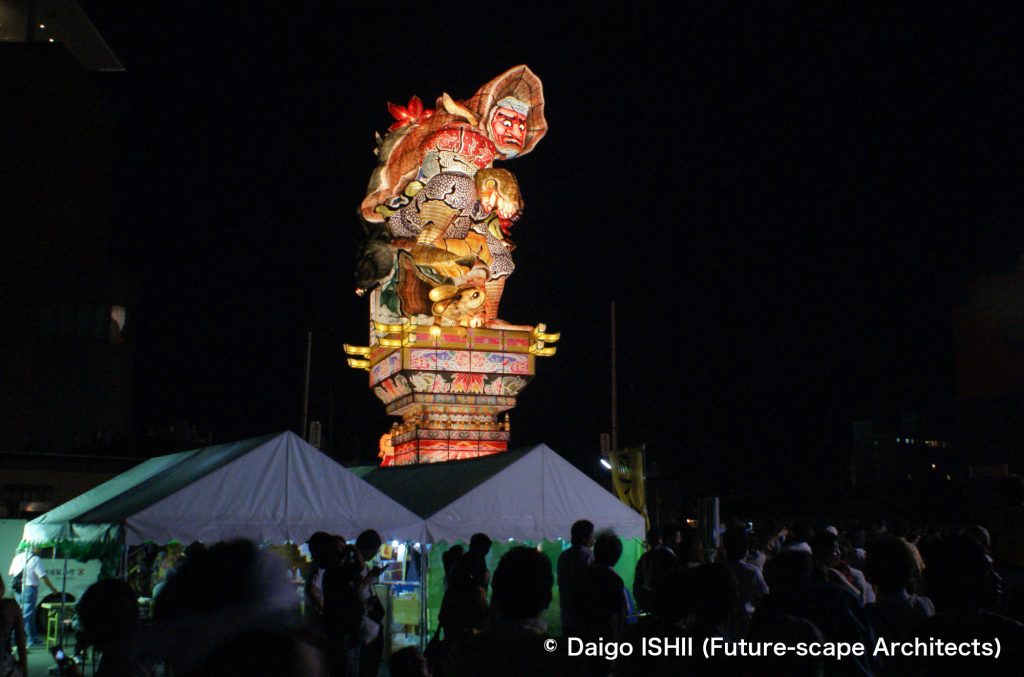
The largest Tachi-Nebuta float "The Matagi (Traditional winter hunter in Northern Japan)" towered high above the temporary tents of the festival.

The largest Tachi-Nebuta float "The Matagi (Traditional winter hunter in Northern Japan)" paraded in Downtown Goshogawara.
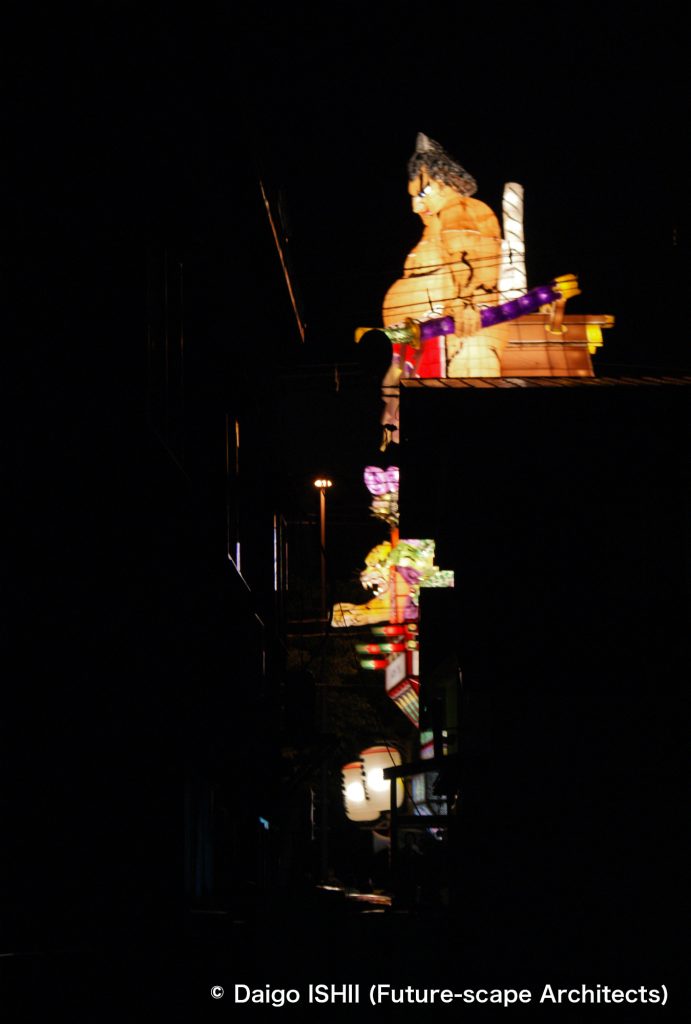
The Tachi-Nebuta float "The Sumo Champion - World Peace" by Goshogawara Agriculture and Forestry High School was seen through the buildings.

See the Tachi-Nebuta floats parading Downtown Goshogawara, The largest Tachi-Nebuta "The Matagi (Traditional winter hunter in Northern Japan)" was followed by the Tachi-Nebuta float "The Sumo Champion - World Peace" by Goshogawara Agriculture and Forestry High School and the Tachi-Nebuta float "Water Margin - Li Kui and Zhang Shun" by Sakae Tachi-Nebuta Association.
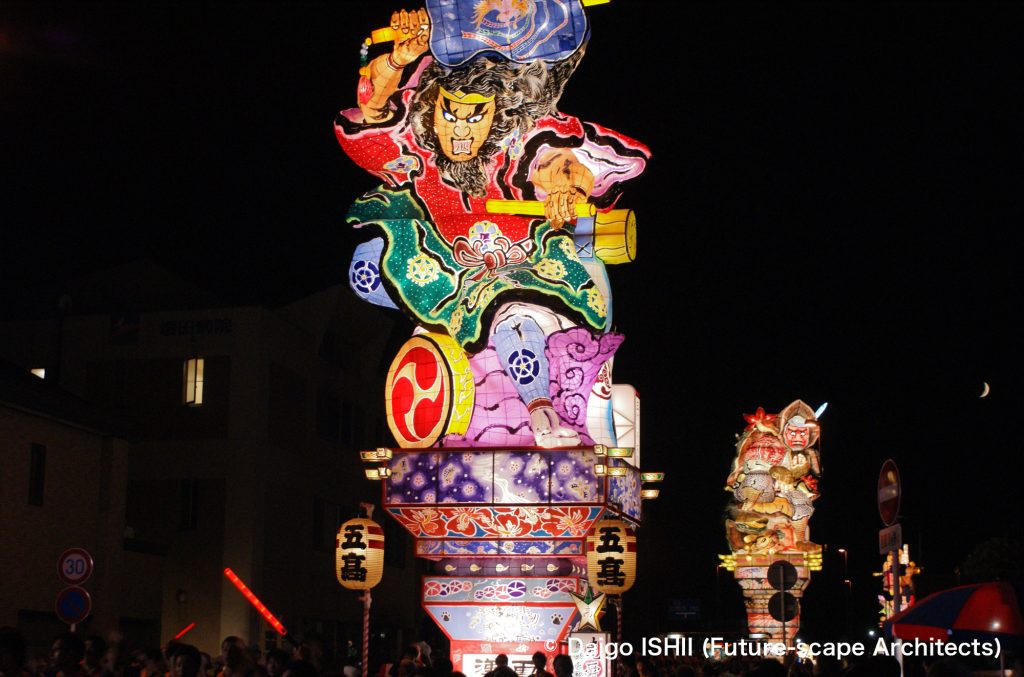
See the Tachi-Nebuta floats parading Downtown Goshogawara, with the Tachi-Nebuta "Yao Shun's reign" by Goshogawara High School, followed by the largest Tachi-Nebuta "Matagi" .
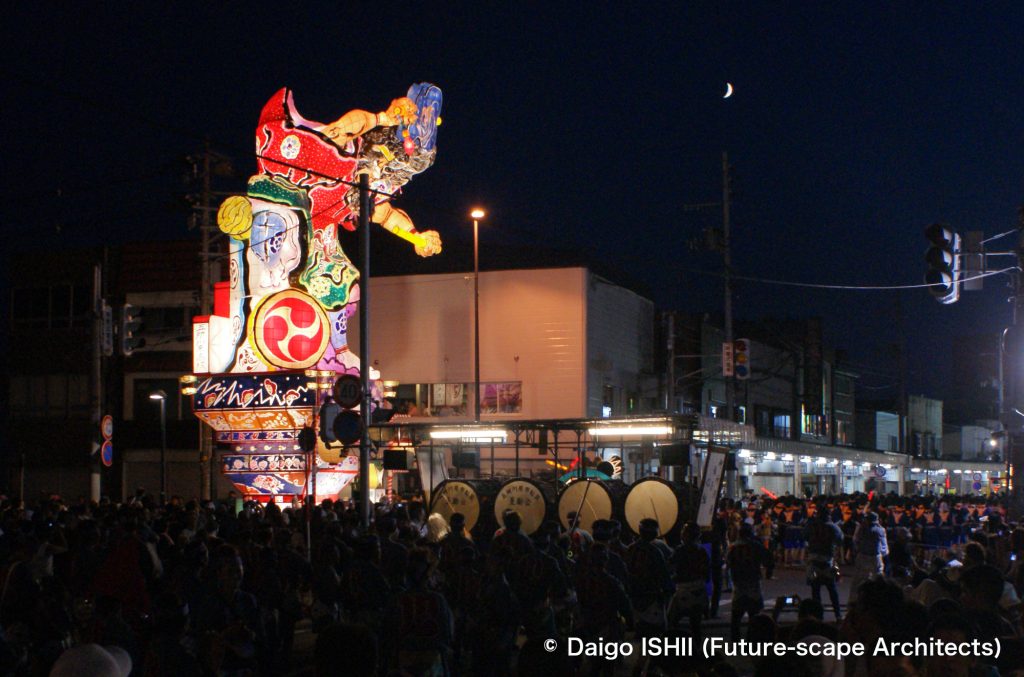
See the Tachi-Nebuta float by Goshogawara High School, which paraded Downtown Goshogawara. It was titled with "Yao Shun's reign" based on the Chinese legend.
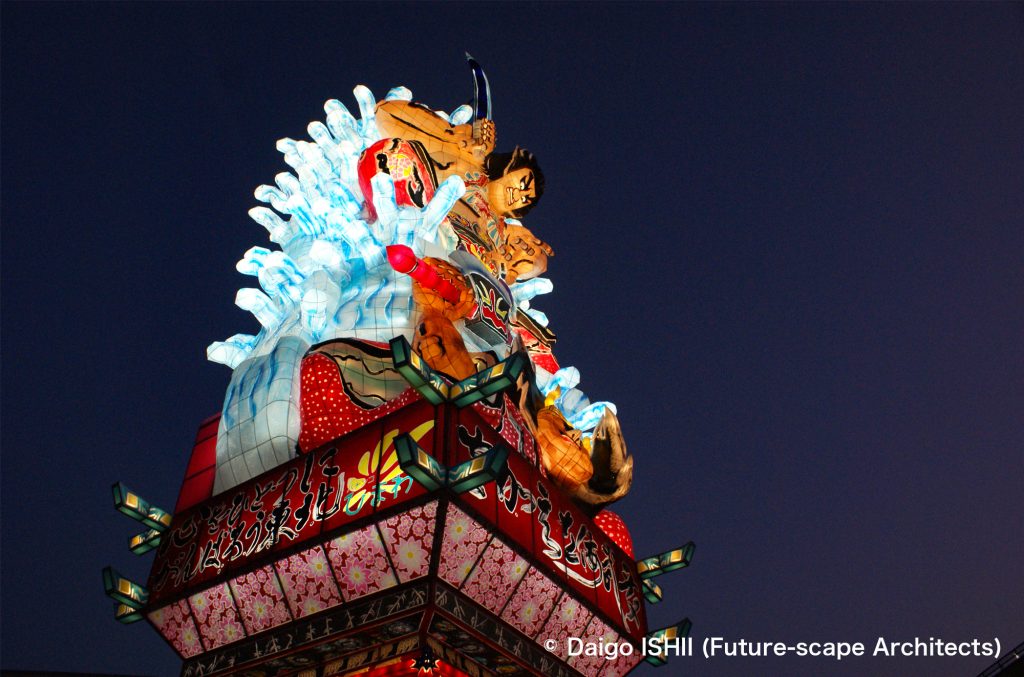
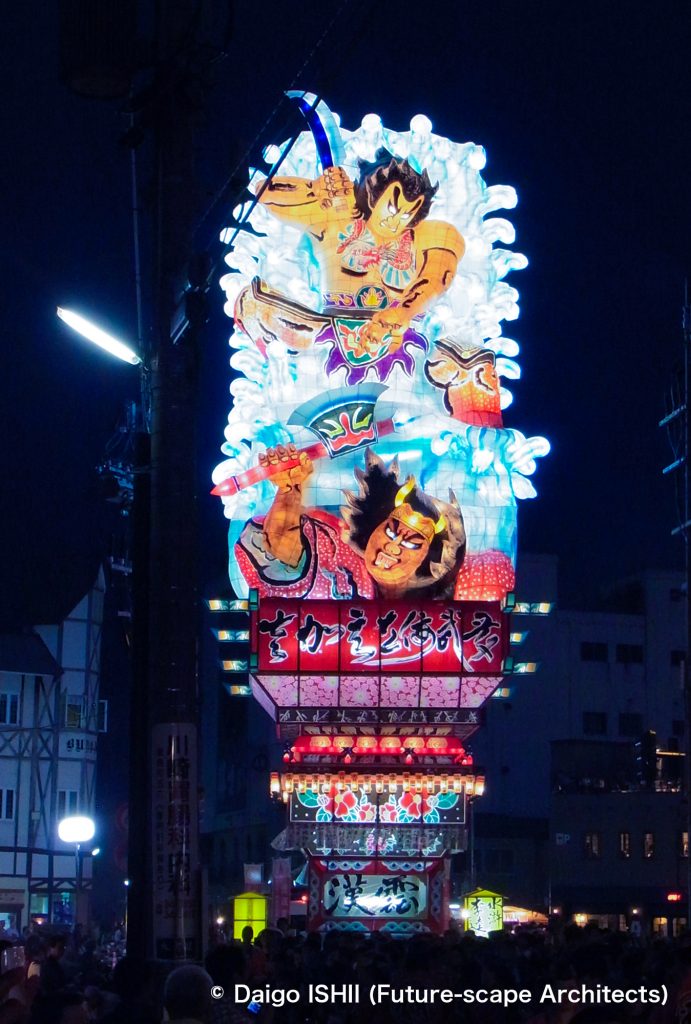
See the Tachi-Nebuta float by Sakae Tachi-Nebuta Association in 2011. It was titled with "Water Margin - Li Kui and Zhang Shun" based on the Chinese literature. The expression of water was outstanding.


See the Tachi-Nebuta float by Goshogawara Agriculture and Forestry High School in 2011. It was titled with "The Sumo Champion - World Peace" .


There are three largest Tachi-Nebuta floats, and they are renewed every three years. See the front view of one of the largest Tachi-Nebuta float, which paraded from 2010 until 2012. It was titled with "The Matagi (Traditional winter hunter in Northern Japan)" , and the Nebuta artist Tadahiro Saitoh produced.
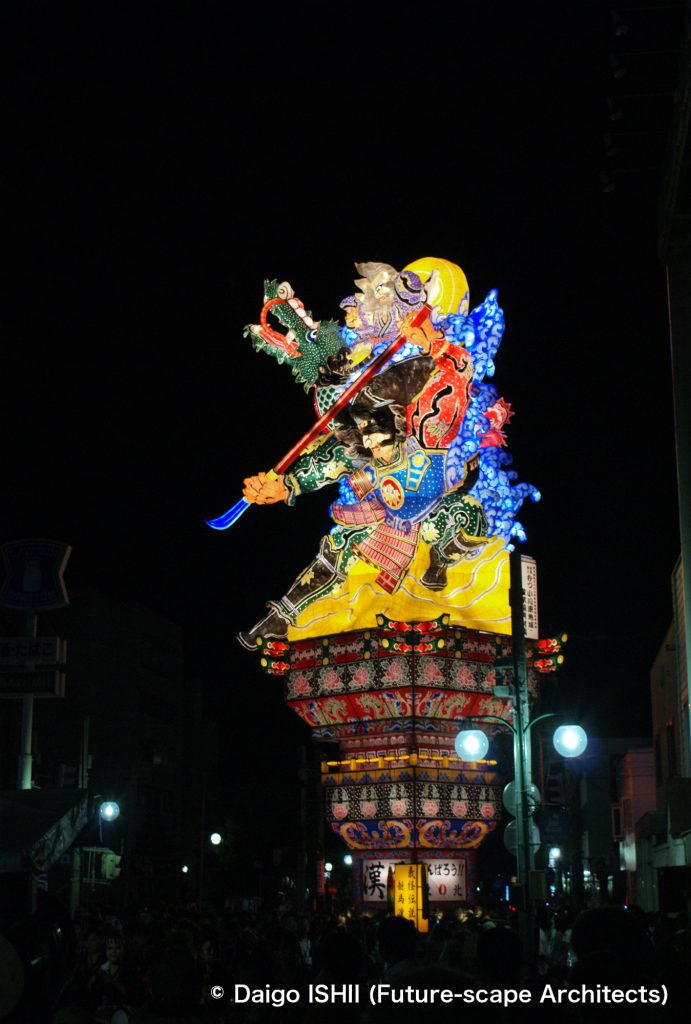
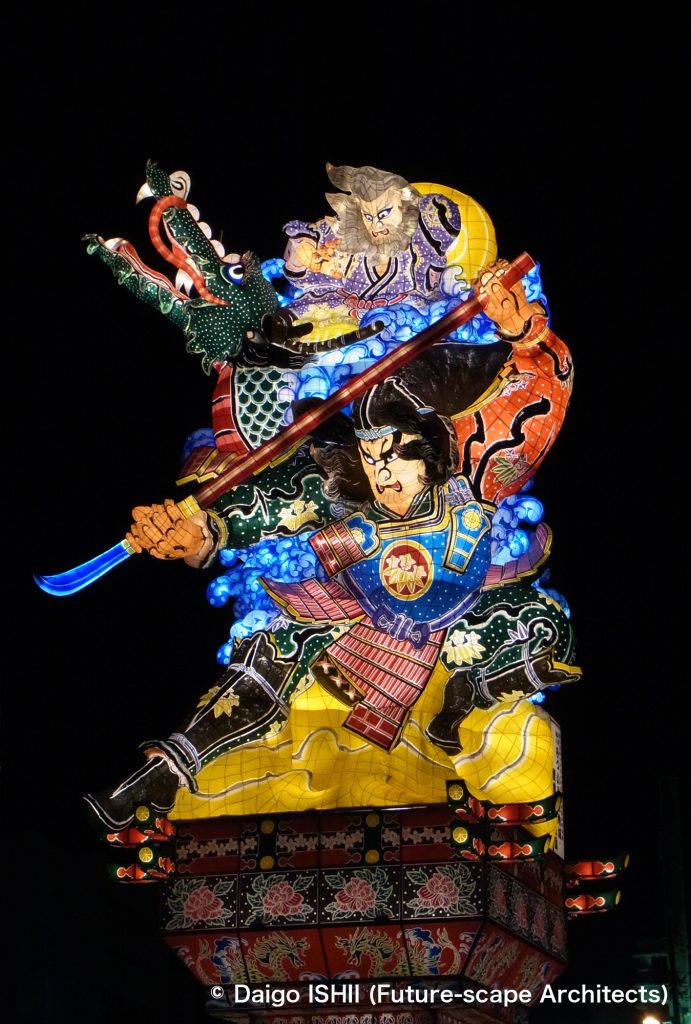
There are three largest Tachi-Nebuta floats, and they are renewed every three years. See the front view of one of the largest Tachi-Nebuta float, which paraded from 2011 until 2013. It was titled with "The Legend of Yoshitsune, Steed Crossing the Sea" based on a Japanese legend, and the Nebuta artist Akinori Tsuruya produced.
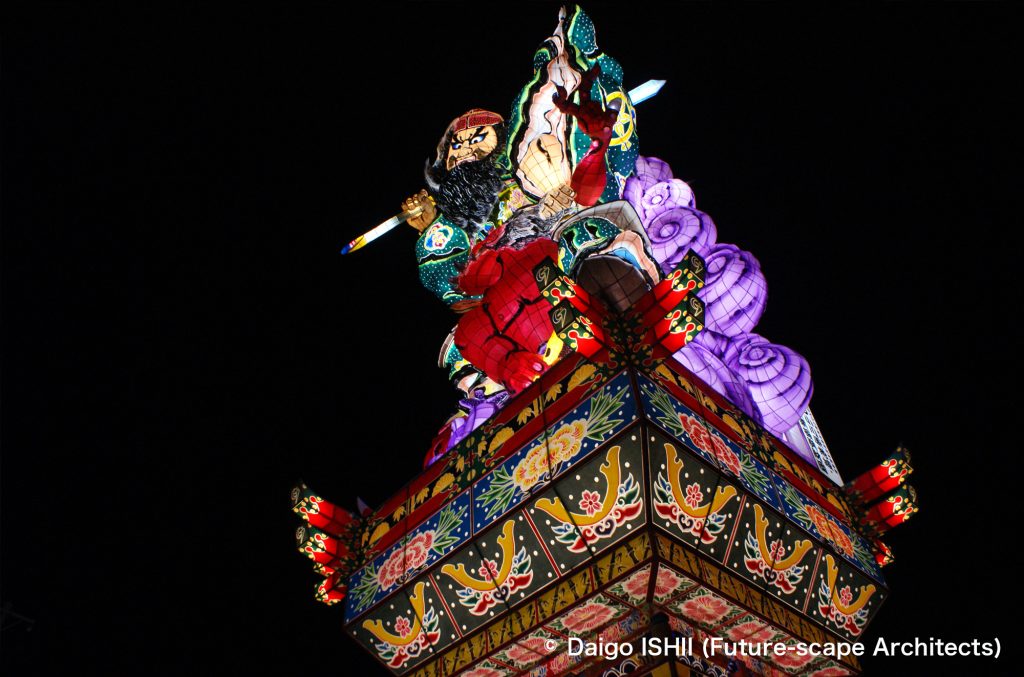

There are three largest Tachi-Nebuta floats, and they are renewed every three years. See the largest Tachi-Nebuta float, which paraded from 2009 until 2011. It was titled with "The dream breaks the evil" , and the Nebuta artist Atsuyuki Mikami produced.

Spectators put their heads forward to look up at Tachineputa float because the roof of the shopping arcade was in the way.

Spectators looked up a Tachi-Nebuta float.
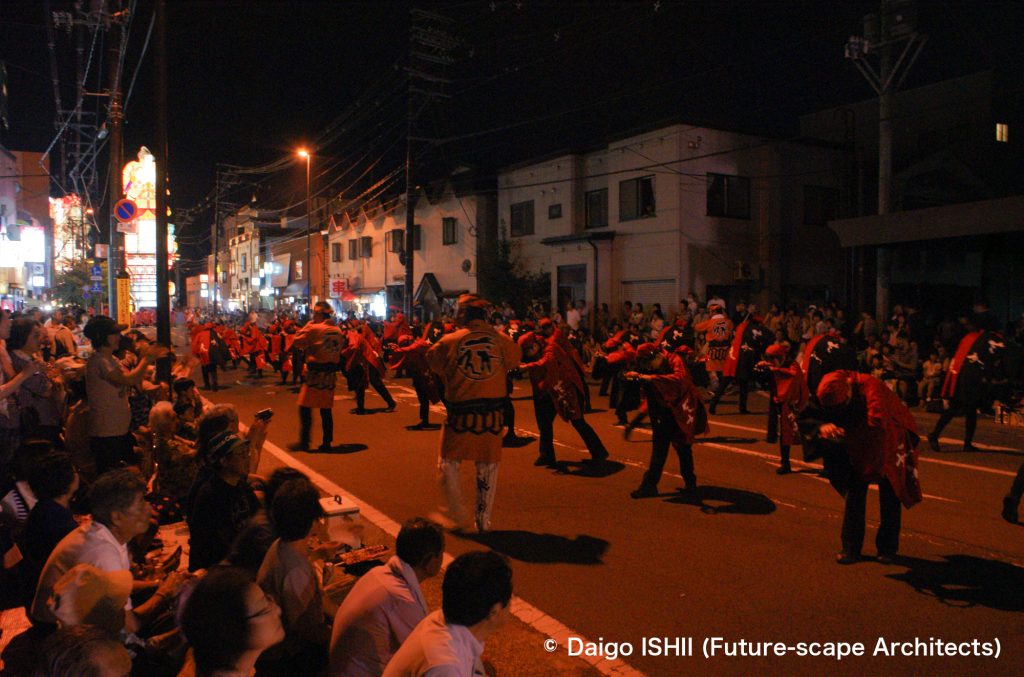
Dancers led the Tachi-Nebuta.

There was a stall of ginger miso oden (Japanese style hotchpotch), which was an Aomori specialty.

See the back view of Tachi-Nebuta parading through downtown Gosyogawara.
ご感想はこちらへ / Click here for your impressions
もっと詳しく → 青森のお祭り:立佞武多 - 1(五所川原、青森、日本)
もっと詳しく → 青森のお祭り:立佞武多 - 2(五所川原、青森、日本)
When you want to know more → Traditional Festivals in Aomori : Tachi-Nebuta - 1 (Gosyogawara, Aomori, Japan)
When you want to know more → Traditional Festivals in Aomori : Tachi-Nebuta - 2 (Gosyogawara, Aomori, Japan)
参考文献 / reference
立佞武多の館のホームページ
五所川原高校のホームページ
五所川原農林高校のホームページ
さかえ立佞武多のホームページ
Wikipedia
写真の無断使用、転用はご遠慮下さい。/ Please do not use or upload our photos without permission.





